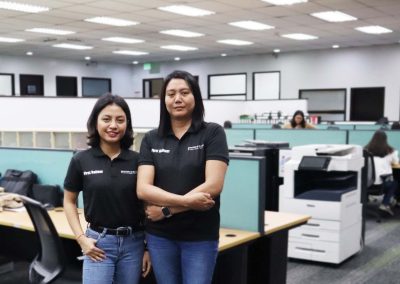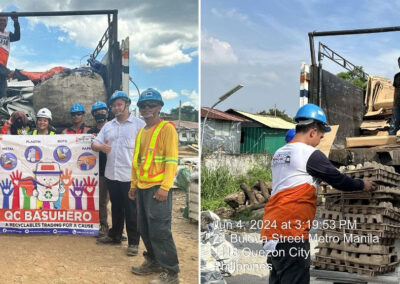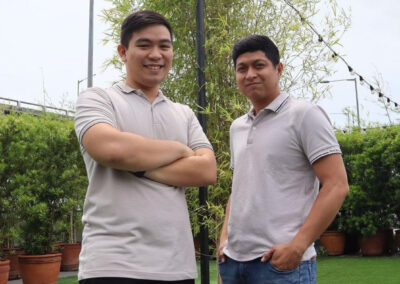Editor’s Note: This issue is the first in a series of articles exploring First Balfour’s sustainability journey in relation to the United Nations Sustainable Development Goals (UN SDGs). Stay tuned for the succeeding articles on our other Priority SDGs which we will publish in the coming months.
Released in July 2022, the 2022 Sustainable Development Goals (SDG) Report details how the SDGs are all at risk due to the piling challenges brought about by the COVID-19 pandemic. The report outlined that for us to meet SDG 6: Clean Water and Sanitation by 2030, the rate of improvement must be quadrupled. Even with significant progress, the globe will only be able to attain 81% coverage by 2030, falling short of the objective and leaving 1.6 billion people without access to clean drinking water.
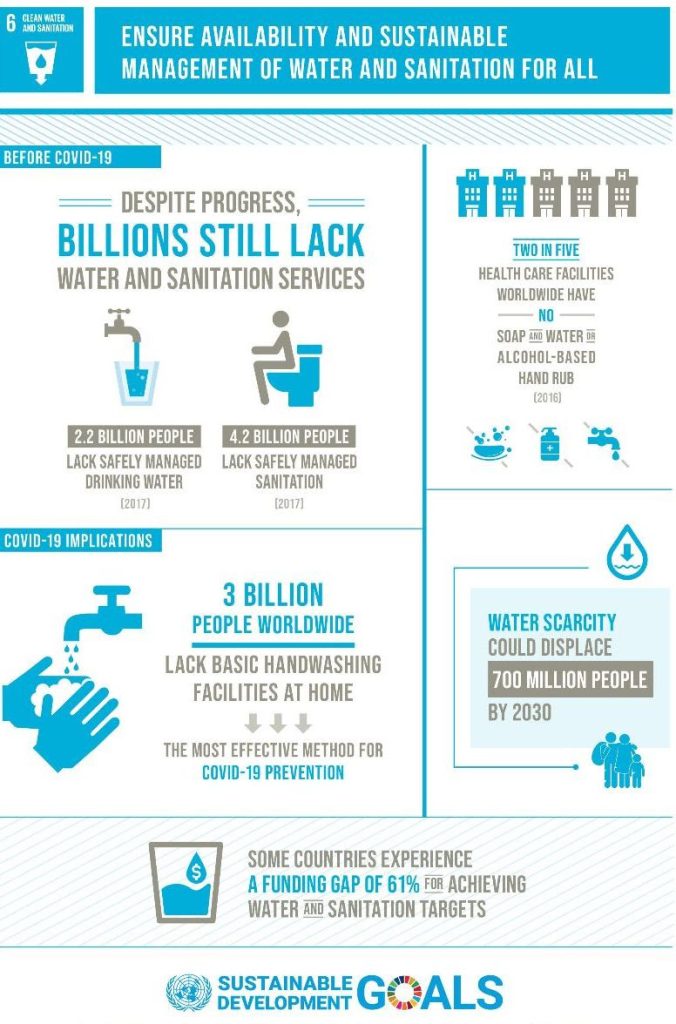
Despite the tremendous efforts in expanding access to sanitary facilities and clean water, billions of people, particularly in rural regions, still do not have these necessities. A third of the population are yet to have access to safe drinking water and more than 600 million until now are not able to practice proper water sanitation. This leads to compounding problems in both environmental and healthcare sectors.
The Philippines’ irony in water supply
Despite having multiple bodies of water, Metro Manila still has problems with water distribution. The metro of 12 million people still receives 97% of its water needs from the 54-year-old Angat Dam. Another major source of water for the province is the La Mesa Dam, but supply tends to depend on seasons. Major water concessionaires have also begun tapping Laguna Lake as a possible water source even though the lake is a discharge point for untreated wastewater. Aside from these, the national government has mentioned that one of the primary points of concern for water distribution is management and waterworks. Even in rainy seasons, unexpected water service interruptions still loom in different parts of Metro Manila.
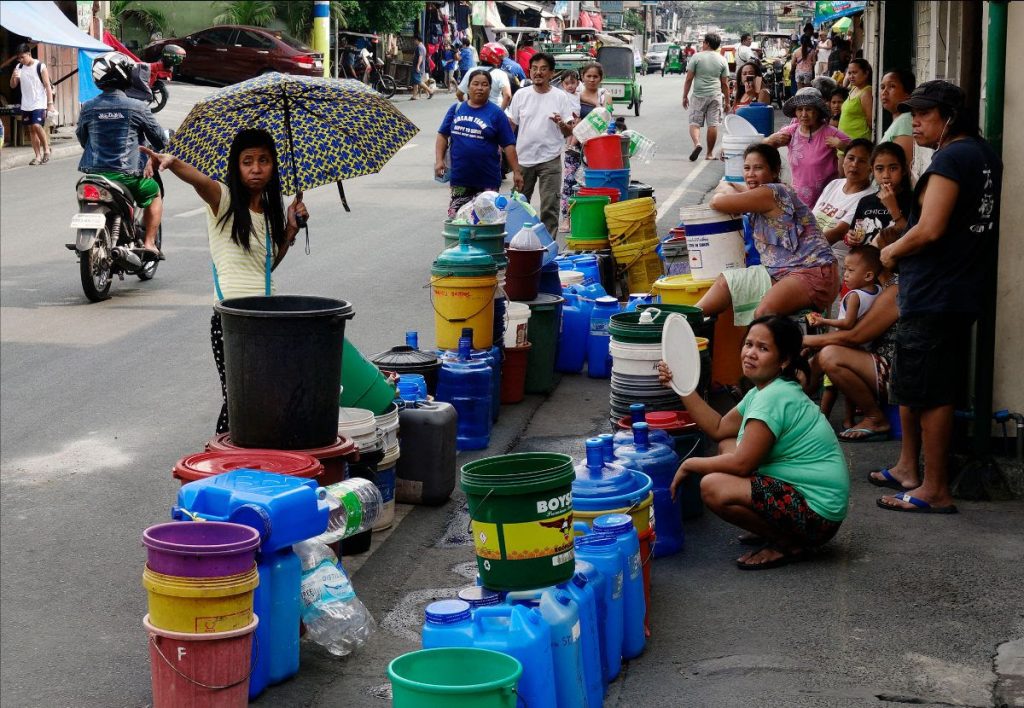
Other regions in the Philippines also struggle with water supply. In some areas, supplies are frequently interrupted to maintain capacity. Six to eight months of the year in the country are typically dry and hot and during these times, there are severe water shortages and people tend to rely on potentially unsafe drinking water sources. Additionally, they might not have access to enough water to shower and practice basic hygiene to ward off sickness. The country still heavily relies on groundwater which provides more than 50% of the country’s potable water supply and 85% of its piped water supply. Aside from water stress brought on by climate change, the population is projected to grow by around 50% by 2050, with the urban population likely to double over that time. This will put even more strain on future water resources.
The government has been urged to accelerate the development of several infrastructure projects connected to water security because of the growing population’s impact on rising water consumption. Business Development Officer for Water Infrastructure Projects Karen Ray Isaguirre (second from left) shares, “First Balfour is diversifying its capacity to adapt to the fast-paced requirement of providing sufficient, clean, and safe water supply. Currently, we are exploring potential projects outside Metro Manila to assist regions that are experiencing water scarcity.”
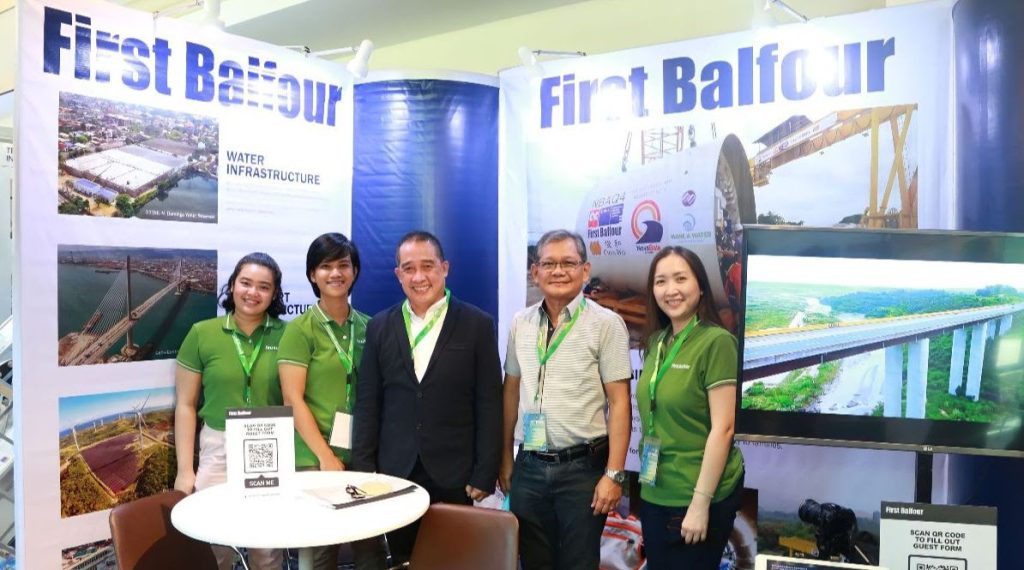
Leading the way
Over the years, First Balfour, in its efforts to leverage its engineering and construction expertise in infrastructure that address water reliability, has completed the construction of several reservoir and water conveyance projects in the metro. It has completed the N. Domingo, Balara, Maguey, and Silangan water reservoirs with a total capacity of 156 million liters (ML) in early 2010s and the Angat Water Transmission Improvement Project with a water conveyance capacity of 200 million liters per day (MLD) in 2019. One of its biggest projects to date, the Novaliches-Balara Aqueduct 4 (NBAQ4) Project, will be able to transmit 1000 MLD once operational by end-2022.
First Balfour has also secured its first huge water treatment plant (WTP) project. The engineering, procurement, and construction (EPC) works for Manila Water’s East Bay Phase 1 WTP Project in Pakil, Laguna is currently being handled by First Agua, a joint venture between First Balfour and Spanish firm Tedagua. To meet water needs and avoid water shortages, the project entails pumping water from Laguna Lake, the country’s biggest inland body of water. Water will be sourced from its easternmost part where there is better water quality.
The EPC contract covers the entire design and construction of a WTP which has a 50 MLD capacity, an intake facility, an 8 ML reservoir, and the installation of pumps and their controls. Once operational, the project will be able to treat 50 million liters of water per day for the 390,000 residents of Rizal.
Both the NBAQ4 and East Bay WTP projects are under the Major Projects Division. Head of MPD Malcolm Lorimer shares, “These two water supply and treatment projects are part of Manila Water’s mission to provide additional, reliable and safe water sources for Metro Manila. First Balfour’s teams are committed to supporting our client to achieve these important goals as well as achieving our own objective of being a leading contractor in the water sector.”
Aside from pursuing water infrastructure projects and operating local water concessions, First Balfour also aims to monitor and reduce its water consumption across all its facilities and project sites. Among the initiatives already in place is the expansion of the Head Office’s rainwater harvesting facility which collects rainwater from the roofs and drainages for use in irrigation and urinal and toilet flushing. This initiative has saved, on average, 30% on annual water consumption from 2020 to 2022. Other than that, the company also uses recycled water for wheel-washing operations in some of the project sites.
On the ground: Coastal Cleanups
In its goal to embed understanding and appreciation of SDG 6, the Human Resources Employee Relations team has also initiated simultaneous coastal cleanup activities in celebration of the International Coastal Cleanup Day last September 17. A total of 298 employees from projects in Metro Manila, Batangas, Laguna, Ilocos Norte, Leyte, Albay, Negros Oriental, and Cotabato volunteered and gathered a total of 1,604 kilograms of wastes.
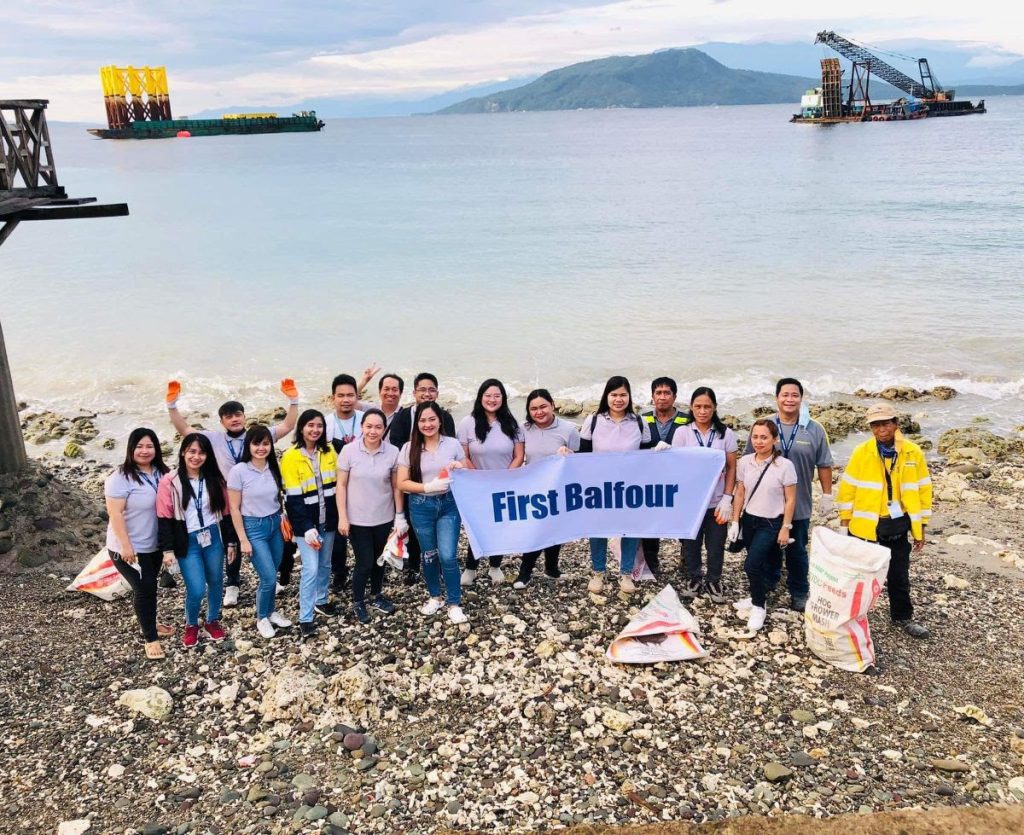
SDG 6 is one of the five Priority SDGs of First Balfour including SDG 5 (Gender Equality), SDG 8 (Decent Work and Economic Growth), SDG 9 (Industry, Innovation, and Infrastructure), and SDG 12 (Responsible Consumption and Production). This and other sustainability strategies are being cascaded across the whole organization in the aim to embed its mission to forge collaborative pathways for a decarbonized and regenerative future.
REFERENCES
Barkwith, A. (2021, June 10). Improving water security in the Philippines – British Geological Survey. British Geological Survey. https://www.bgs.ac.uk/news/improving-water-security-in-the-philippines/
Gutierrez, D. (2022, July). Manila Water building Laguna Lake water treatment plant to serve more Rizal towns. INQUIRER.net; INQUIRER.net. https://newsinfo.inquirer.net/1635403/manila-water-builds-another-water-treatment-plant-at-laguna-lake-to-serve-more-rizal-towns
Projects – East Bay Drinking Water Treatment Plant. (2022). Tedagua.com. https://www.tedagua.com/en/project/east-bay-drinking-water-treatment-plant
Robles, N. (2019, March 20). Manila Water apologizes for water interruptions, takes blame for shortage —. Asian Journal News. https://www.asianjournal.com/philippines/metro-manila/manila-water-apologizes-for-water-interruptions-takes-blame-for-shortage/
United Nations. (2022). The Sustainable Development Goals Report 2022. https://unstats.un.org/sdgs/report/2022/The-Sustainable-Development-Goals-Report-2022.pdf

